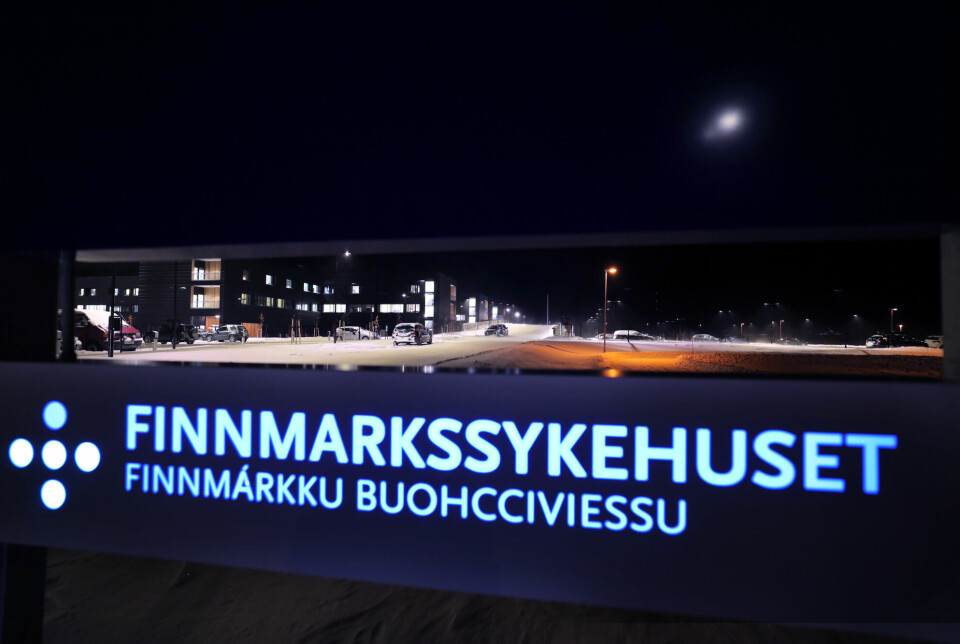
Norway spends more on health per person than any other European country
Last year, Norwegians spent NOK 83,000 (about 7,430 USD) each on health.
What socioeconomists call Mainland Norway – Norway without the oil and gas revenues from the North Sea – spends a larger proportion of its money on healthcare than any other country in Europe.
However, Norway receives a substantial income from the North Sea. These funds enable us to allocate more money for sectors like healthcare than other nations.
Even when accounting for this extra income, Norway still ranks fourth in Europe in terms of the proportion of our income (GDP) spent on healthcare.
NOK 453 billion
New and preliminary figures from Statistics Norway show that Norway's total healthcare expenditures amounted to NOK 453 billion (40.4 million USD) in 2022.
This corresponds to 11.4 per cent of Norway's GDP (Gross Domestic Product). And it corresponds to 12.9 per cent of Mainland Norway's GDP.
The average among the world's wealthy countries (OECD) is 9.6 per cent.
The residents of the United States allocate the largest share of their money to healthcare, making up a substantial 18.8 per cent of their GDP.
The healthcare system in the USA is organised differently than in other wealthy countries. Far more of the services are financed through private health insurance and delivered by private companies.
Most viewed
No content
Norway spends the most in the Nordics
Measured in dollars and adjusted for what you get for the money in each individual country (USD PPP), Switzerland, Germany, and Norway are the countries that spend the most money on healthcare per capita in Europe. It should be noted that a lot of private healthcare services are purchased in Switzerland.
In 2022, Norway spent more money on healthcare per capita than any of the other Nordic countries.
According to the OECD, Norway spent approximately 7,900 USD (adjusted for purchasing power) per capita. Sweden spent around 6,400 USD, Denmark spent around 6,300 USD, and Finland spent around 5,700 USD.
Among the OECD countries, it’s Turkey that spends the smallest portion of its money (GDP) on healthcare, only 4.6 per cent.
In general, wealthy countries spend a clearly larger portion of the money they have at their disposal of on healthcare than poorer countries do.
The public sector covers 85 per cent
Statistics Norway's figures otherwise show that:
- The public sector pays around 85 per cent of the healthcare expenditures in Norway. A significant portion of private healthcare spending goes to pay dental bills.
- The public sector itself provides around 70 per cent of the healthcare services used. (The state provides 38 per cent and the municipalities 32 per cent).
- The state spends the most money on hospitals. The municipalities spend the most money on nursing homes and home care.
- Almost 400,000 people work in the Norwegian healthcare system.

Roughly speaking, around 50 per cent of Norway's healthcare expenditures go to medical treatment.
Around 30 per cent is spent on care and nursing. Around 10 per cent is spent on medicines. Around 3 per cent is spent on what is called preventive healthcare work.
Private dental expenses
Which healthcare services are publicly funded and which are covered by households varies greatly from country to country.
In Norway, for example, we pay around 70 per cent of our dental bills ourselves, while the public sector covers 30 per cent. In Germany, it is the exact opposite.
In Germany, on the other hand, a smaller portion of the expenditures for care and nursing services are paid by the public sector. More care and nursing is paid for with private money.
———
Translated by Alette Bjordal Gjellesvik
Read the Norwegian version of this article on forskning.no
References:
Statistics Norway: Health care costs per inhabitant 2022: 83 084 NOK. Health accounts article, 19 October 2023.
OECD Data: Health spending, 2023.
































